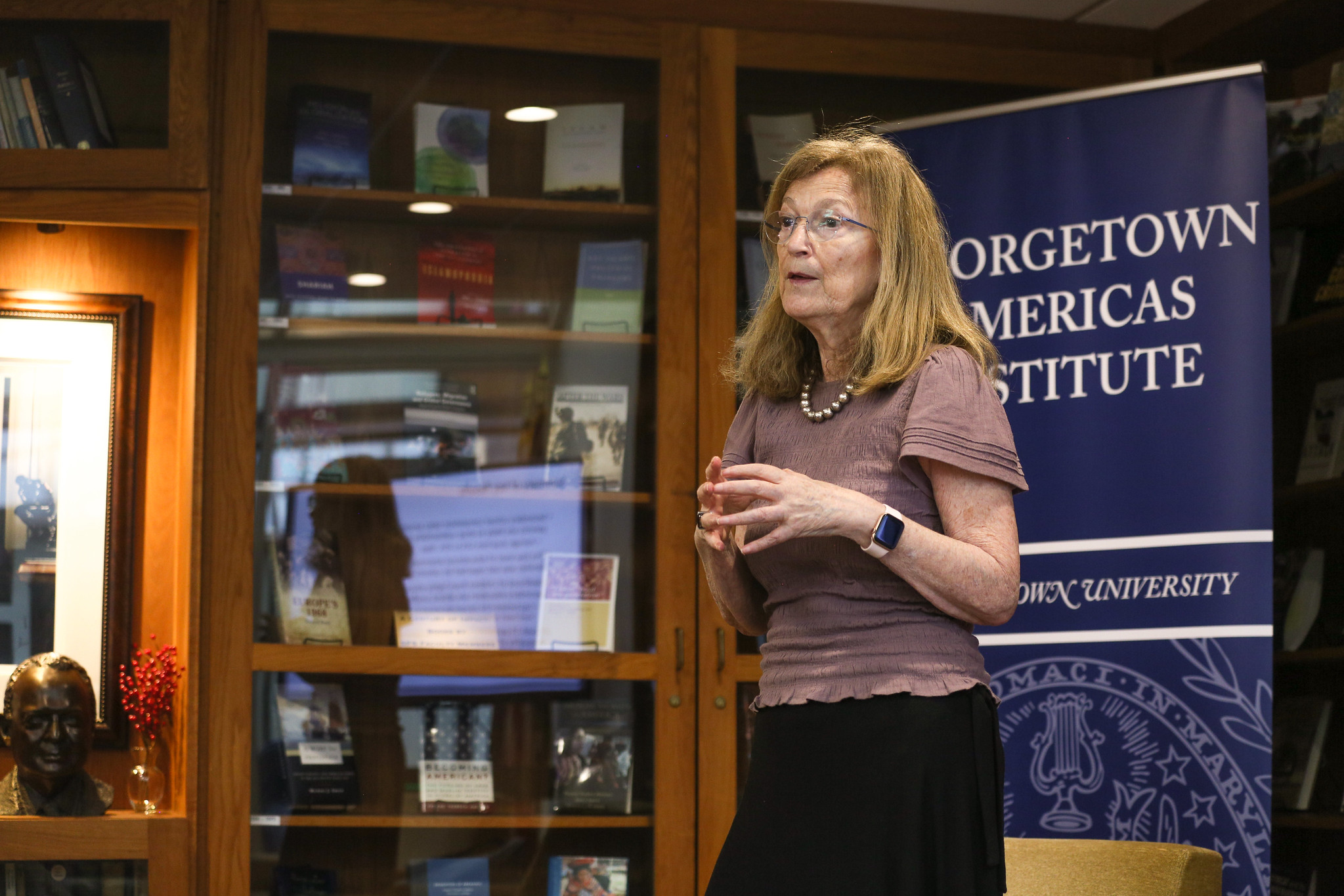Professor Nora Lustig Presented her Research on Income Inequality in Latin America and the Implications of the Pandemic on Income Distribution
On September 15, Nora Lustig joined GAI for a discussion on reducing inequality in Latin America and the Caribbean.

Latin America experienced tangible success in reducing inequality throughout the commodities boom period of 2002 primarily because of sustained and notable increases in access to education in the previous decade. That was one of Professor Nora Lustig’s main conclusions during her presentation at Georgetown’s McGhee Library, where she conversed with students and faculty about the drivers behind the region’s achievements in recent years in tackling the pervasive challenge of inequality. Lustig, who is the Samuel Z. Stone Professor of Latin American Economics and is also the founding director of the Commitment to Equity Institute (CEQ) at Tulane University, divided her presentation into three main sections.
Historical Overview of Inequality in Latin America
First, she presented a historical overview of Latin America’s economic inequality, dividing the past three decades into distinct periods, roughly corresponding with the years of 1990-2001, 2002-2013, and 2014 to the present. According to her research, the 1990s saw inequality indicators worsen notably but also witnessed an expansion in access to education. Then in the 2000s, the picture took a dramatic turn as the effects of widespread education worked in tandem with redistributive policies and the commodities boom to significantly reduce regional inequality, aided in part also by a “leftist premium” tied to the region’s “Pink Tide” which was recently identified in a CEQ investigation.
Among the factors that led to this improvement, she highlighted the importance of rising wages, which accounted for a 62 percent decline of this period’s reduction of income inequality and was triggered by increasing returns from a better educated workforce. But with the deterioration of macroeconomic conditions that began in 2014 – and particularly given incipient shortfalls in education standards – inequality has since risen once again in many Latin American countries, notably Brazil, while in others progress has continued at a slower pace.

School Closures and Income Inequality
In her second section, Lustig presented the CEQ’s observations on the effects of COVID-19 and the region’s pandemic responses in relation to income inequality. There she presented an alarming picture as national shutdowns and school closures throughout 2020 and 2021 have conducted to a significant shortfall in completion rates throughout Latin America’s education systems as millions of students went without classes, particularly those most vulnerable who lack access to an internet connection and resilient support networks. Considering the centrality of education in reducing inequality, Lustig’s conclusion was that the ongoing deterioration of Latin America’s inequality indicators will only worsen as the region confronts the challenges of a generation (those born between 2001 and 2005) that will be less educated than their older counterparts, going all the way back to the 1960s.
“Because of poorly managed school closures, this generation has experienced a fallback in education not seen since the 1960s, with potentially disastrous consequences for inequality.”
Regional Inequality
Lustig then concluded her remarks with an overview of the CEQ’s research on fiscal redistribution. In the context of the center’s global outlook, Latin America has emerged in their research not so much as a unit but rather a kaleidoscope of disparate national realities when it comes to fiscal redistribution systems. She highlighted how countries such as Argentina and Brazil are greatly dissimilar from countries like Guatemala when it comes to the share of fiscal resources that are allocated to welfare and redistribution, signaling how inequality is not only a domestic reality, but that there also are exponential differences between national realities.
